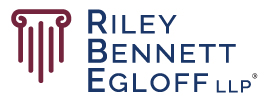Litigation Hold Letters: 5 Steps to Avoid Problems
In today’s world of fast-paced, electronic communication, nearly every corporation in the U.S. maintains electronically stored information (commonly referred to as “ESI”). In general, ESI includes emails, documents, spreadsheets, and text messages. Many companies have formal document retention policies which describe how the company is to preserve ESI. Yet, not all companies have such policies. Since not all companies have document retention policies, the practice of sending “Litigation Hold” letters has become common. Whether you are an owner of a small, local business or General Counsel of a Fortune 500 company, it is critically important to keep an eye out for Litigation Hold letters, since Litigation Hold letters may impose strict standards on your company for retaining documents which may become relevant in future litigation.
What is a Litigation Hold Letter?
A Litigation Hold letter, sometimes called a litigation hold notice or preservation letter, is written correspondence directing an entity or an individual to preserve documents which could become evidence in litigation. These letters usually require the preservation of electronic correspondence (e-mails), documents, spreadsheets, paper documents or other data. Federal courts throughout the country and many states (including those in Indiana) have high standards for ESI preservation.
Although these letters are sometimes accompanied by formal notice of a lawsuit, they are often sent before litigation is initiated, by a person or company who believes it may have a claim against your company. Investigation of the claim or potential claim could still be ongoing, but by sending you the Litigation Hold letter, the sender is most likely imposing a burden on you to preserve certain documents. We have identified five (5) steps to take if you find yourself in receipt of a Litigation Hold letter.
5 Steps to Take if You Receive a Litigation Hold Letter
1. Contact counsel. Although the letter may sound fairly straightforward, and your initial reaction to the letter may be that you believe that you have already taken all of the necessary steps to comply with the requests outlined in the letter, we strongly recommend that you contact counsel right away. The primary reason for reaching out to counsel is to let counsel review the letter, then evaluate whether a response is appropriate. In many circumstances, even a brief response to the letter could help protect your company’s interests in the long run. For example, if the letter requires preservation of “all electronic data,” your counsel could write back and explain your company’s ordinary document retention policy, and offer to preserve additional data from certain employees. By responding to the letter, you are notifying the sender of your plan for responding to the letter and are protecting your company’s interests moving forward, in the event that suit is filed.
2. Determine what documents are responsive. This sounds easier than it will actually be. If the Litigation Hold letter is drafted as broadly as most, it will likely seek documents specifically relating to the matter at issue (for example, the file relating to a particular customer or client), but also may seek documents relating to broader corporate policies. Study the letter closely, and work with counsel to make sure you understand which documents are covered by the request.
3. Identify employees who may have responsive information. Take a careful look at the correspondence to determine who in your company may be in possession of responsive information. Perhaps the best place to start is with your IT department to discuss preservation of electronically-stored information. Then talk to each of the employees who may have responsive documents to determine where they are stored. Is all information stored on your company’s network? Do employees keep documents on their hard drives? Do employees keep any information on personal devices including tablets, phones, or personal computers? Make sure that each employee who has responsive information understands the obligation to preserve the data and takes the appropriate measures to do so.
4. Maintain the hold and follow-up. After you have identified responsive information and the employees who may have such information, make sure that the hold is in place. Confirm with your IT department that the server storage is sufficient, automatic data purges are disabled, and that any backups are working properly. Have any paper documents placed in a secure location – either onsite or offsite. Keep a reminder on your calendar to review this process at a regular interval to confirm that the hold remains in place and employees are taking all necessary measures to preserve any responsive documents.
5. Do not ignore it. Finally, the single most important step to take when you receive a Litigation Hold letter is this: do not ignore it. If you receive a Litigation Hold letter, the temptation to let it sit on your desk will be high. There’s no profit to be made from the letter, no customers to satisfy, no goodwill to be earned, and most likely, a lawsuit lurking in the future. So it is easy to understand why addressing this letter would not be high on your priority list. Nevertheless, do not ignore it. If you do, there may be serious consequences for doing so, and you may be exposing your company to unnecessary risk in future litigation if the requested information is not properly preserved.

Author Sarah MacGill Marr
Sarah represents local, regional, and national companies in commercial litigation in Indiana and around the country. She represents clients in all stages of the litigation process, including trial, and has successfully defended claims for breach of contract, tortious interference with contractual and business relationships, alleged product defects, and premises liability.
Sarah concentrates her practice on commercial cases involving business torts and claims for breach of contract, but also often works with product manufacturers to defend claims. Sarah has a particular interest in structured negotiations and other strategies which may help clients avoid litigation. She regularly counsels clients regarding best practices to avoid litigation, including tips for negotiating and drafting their contracts.
© Riley Bennett Egloff LLP
Disclaimer: Article is made available for educational purposes only and is not intended as legal advice. If you have questions about any matters in this article, please contact the author directly.
Permissions: You are permitted to reproduce this material in any format, provided that you do not alter the content in any way and do not charge a fee beyond the cost of reproduction. Please include the following statement on any distributed copy: “By Sarah MacGill Marr© Riley Bennett Egloff LLP – Indianapolis, Indiana. www.rbelaw.com”
Posted Feb. 14, 2018 by Sarah MacGill Marr
